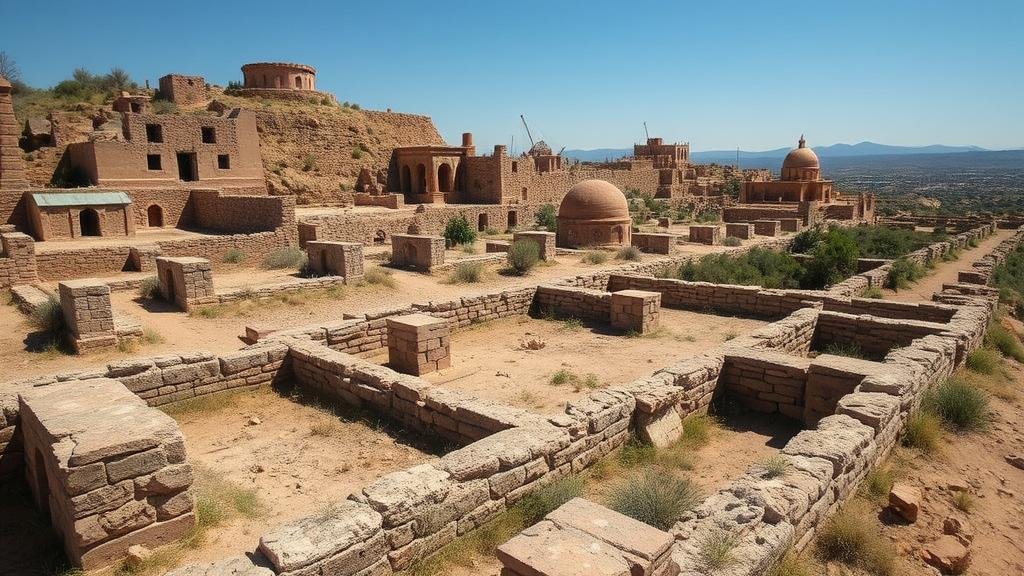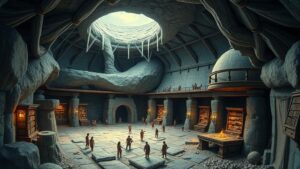Investigating uncharted archeological sites near modern-day landmarks.
Investigating Uncharted Archaeological Sites Near Modern-Day Landmarks
Archaeological exploration has historically unveiled the mysteries of ancient civilizations, but as cities expand and modern landmarks rise, the urgency to investigate uncharted archaeological sites has become increasingly significant. This exploration not only enhances our understanding of history but also informs cultural preservation efforts. This article will delve into the importance of discovering uncharted archaeological sites, explore key examples, and outline the challenges faced in these endeavors.
The Importance of Archaeological Investigations
Understanding historical contexts enhances our grasp of modern society. Archaeological investigations contribute to various fields, including history, anthropology, and cultural studies. The discovery of ancient artifacts and structures sheds light on everyday life, trade practices, and social hierarchies of past civilizations. Here are a few reasons why such investigations are crucial:
- Preservation of Cultural Heritage: Uncovering artifacts and sites aids in preserving historical narratives that may be lost to time.
- Educational Value: These investigations provide tangible connections to history, enriching educational experiences.
- Tourism and Economic Boost: Archaeological sites can draw tourists, contributing to local economies while raising awareness of historical significance.
Notable Examples of Uncharted Sites Near Modern Landmarks
Several archaeological sites near modern cities highlight the importance of diligent exploration. Here are a couple notable examples:
- Teotihuacan, Mexico: Located approximately 30 miles northeast of Mexico City, Teotihuacan was one of the largest urban centers in the ancient world. Despite its proximity to a bustling modern metropolis, ongoing excavations continue to uncover hidden temples and residential complexes that depict the lives of its inhabitants between 100 B.C. and 750 A.D.
- Çatalhöyük, Turkey: Often cited as one of the oldest urban centers, this Neolithic site dates back to 7500 B.C. It is situated near the contemporary city of Konya. Excavations have revealed insights into early human settlement patterns, social structures, and practices. The sites ongoing preservation efforts highlight the rich tapestry of human history right beside modern civilization.
Challenges Faced in Archaeological Research
Investigating uncharted archaeological sites presents several challenges, which can hinder progress and preservation efforts. Some of the most pressing issues include:
- Urban Development: Construction projects often threaten archaeological sites. For example, the expansion of infrastructure in urban areas can lead to the destruction of sensitive sites before they are even documented.
- Funding Constraints: Limited financial resources can impact the scope and depth of archaeological studies. Many discoveries are made serendipitously, rather than through comprehensive excavations.
- Scientific Limitations: As archaeology increasingly incorporates technologies like ground-penetrating radar, access to advanced tools may be limited, especially in developing countries.
Real-World Applications and Collaborative Efforts
The integration of archaeological research into urban planning and heritage management highlights the significance of collaboration. Some modern cities have established protocols to incorporate archaeological considerations into urban development projects. For example:
- Rome, Italy: The city has strict regulations requiring archaeological assessments before construction begins, effectively creating a synergy between preserving ancient artifacts and modern development.
- New York, USA: Initiatives such as the Archaeological Sites of New York City project have aimed to document and protect uncharted sites in one of the worlds largest urban environments.
Actionable Takeaways
The pursuit of uncharted archaeological sites near modern landmarks is not just a historical endeavor; it enriches our present and shapes our future. By understanding the significance of these investigations, we can take proactive steps to support preservation efforts. Here are some actionable takeaways:
- Support policies that advocate for archaeological preservation during urban planning.
- Engage with local archaeological groups or societies to promote awareness and education.
- Opt for tourism experiences that prioritize archaeological sites and cultural heritage.
To wrap up, the investigation of uncharted archaeological sites is crucial for understanding our collective past. As we continue navigating a rapidly developing world, we must ensure that these narratives are preserved for generations to come.


